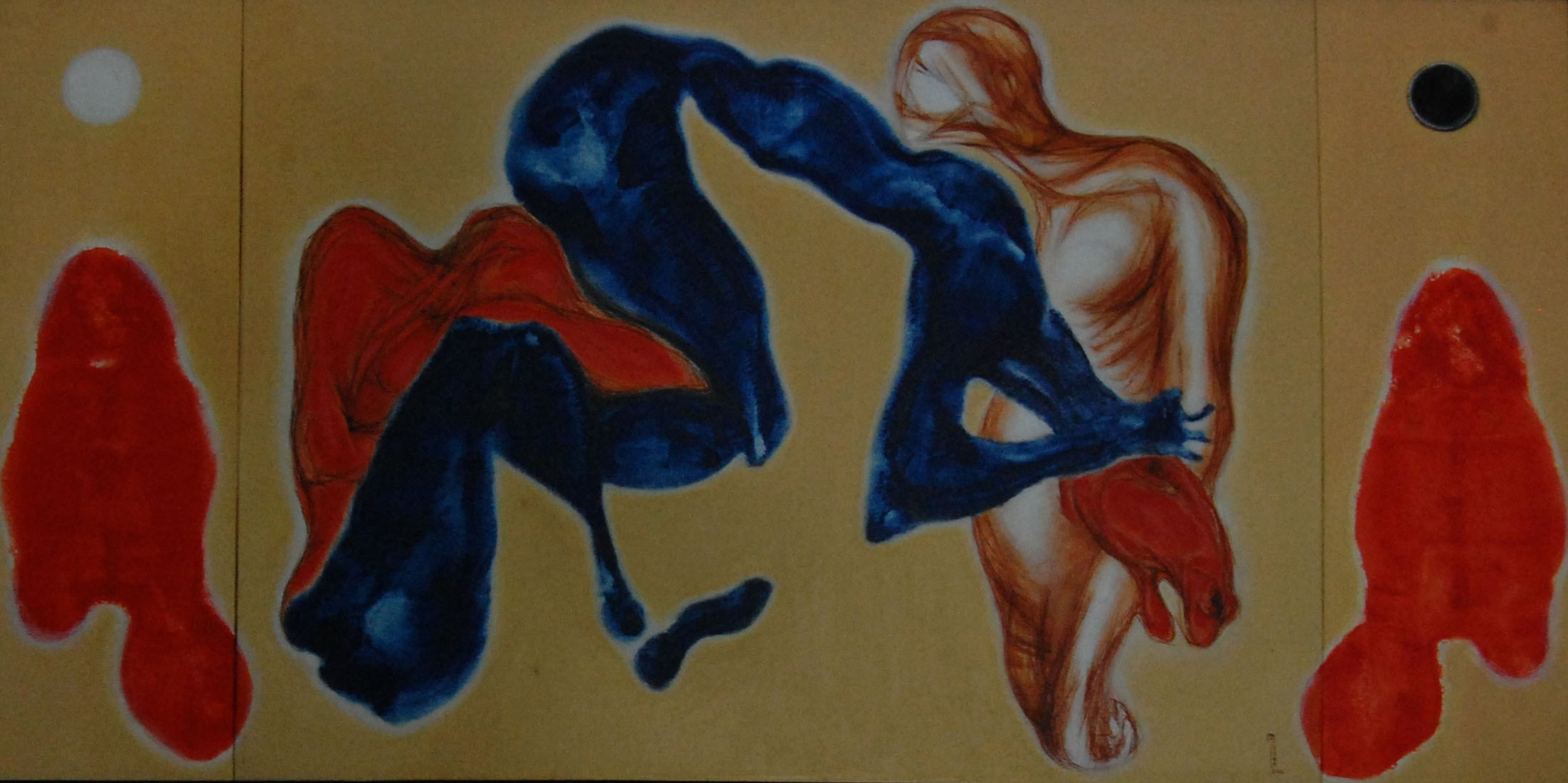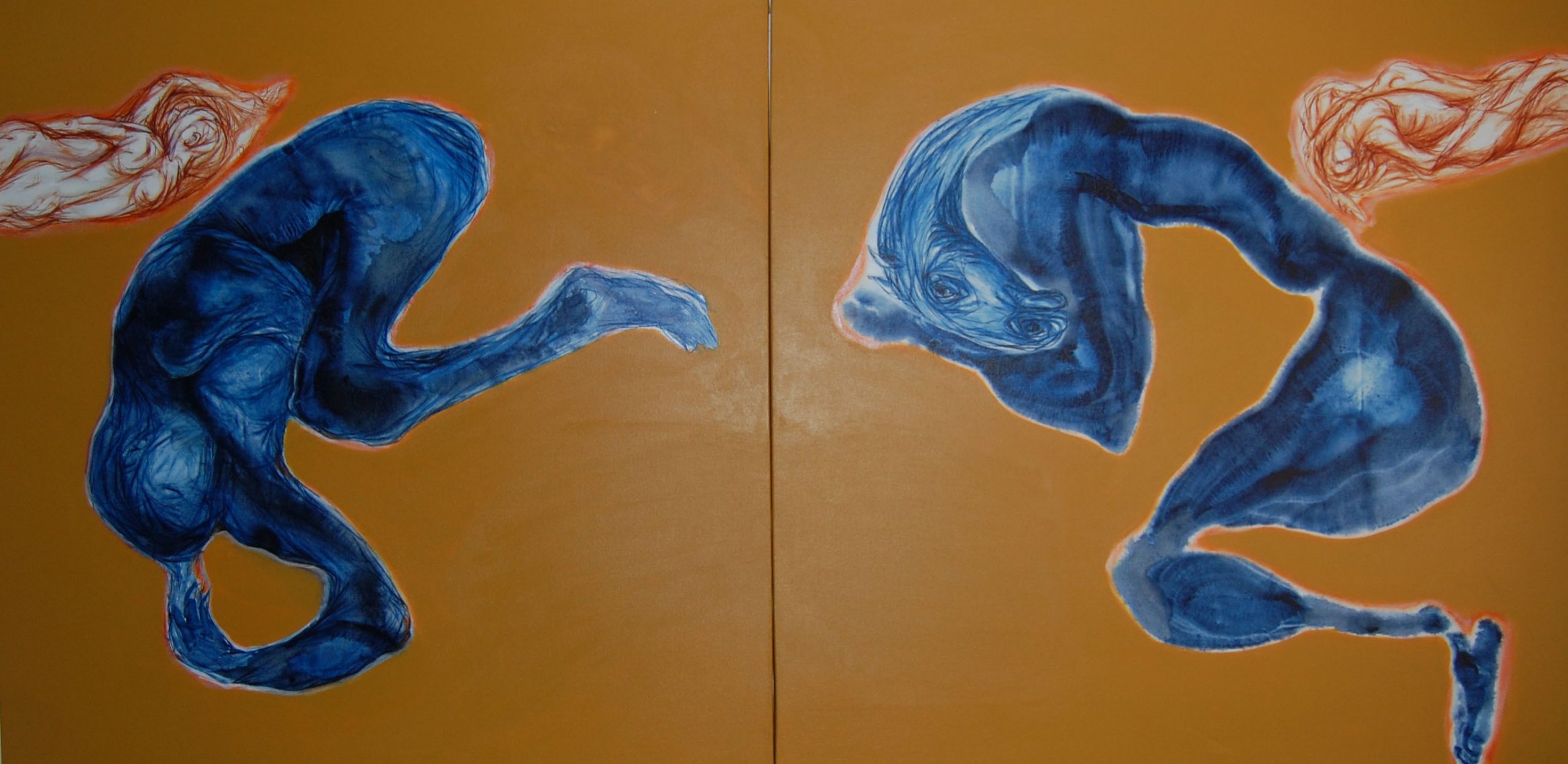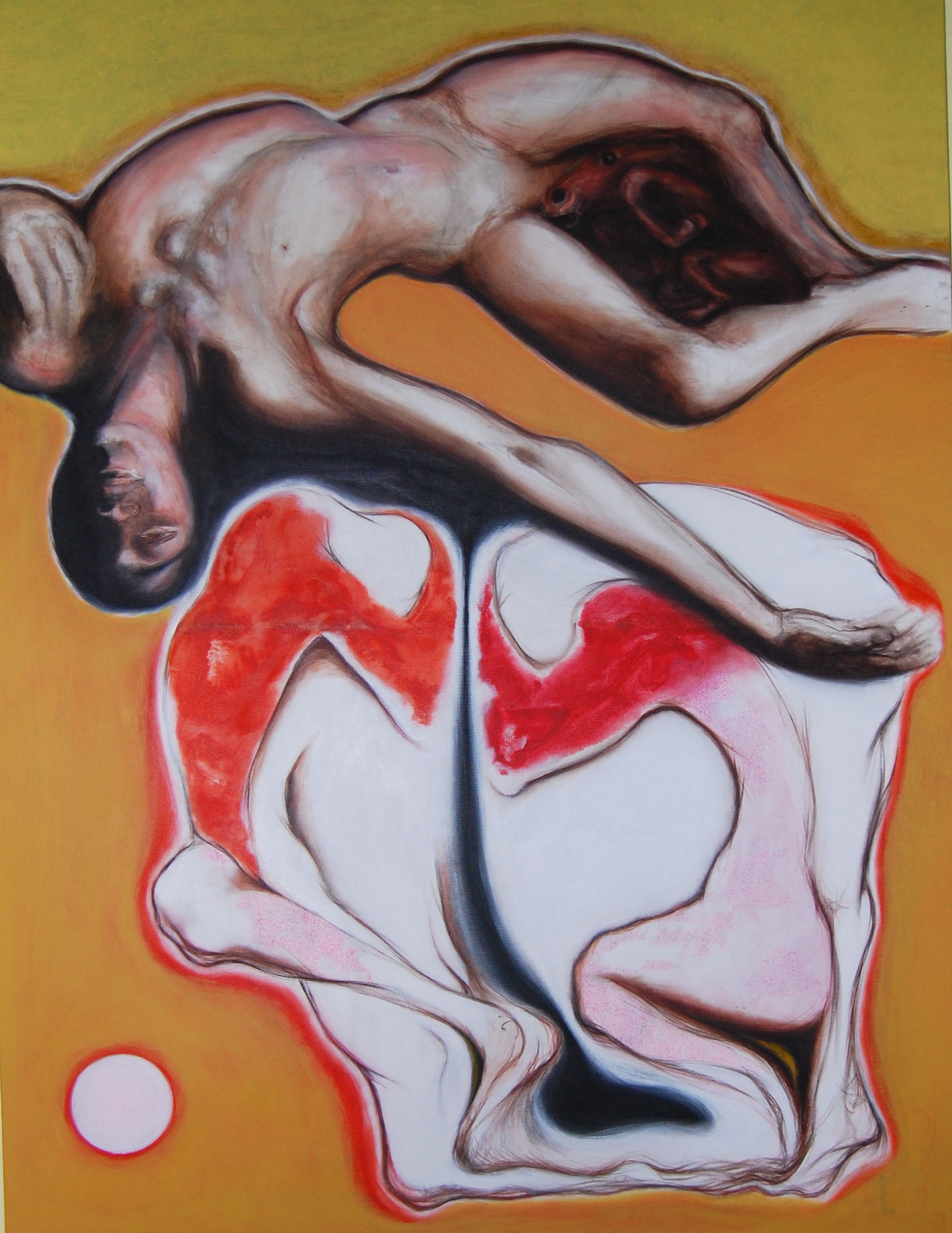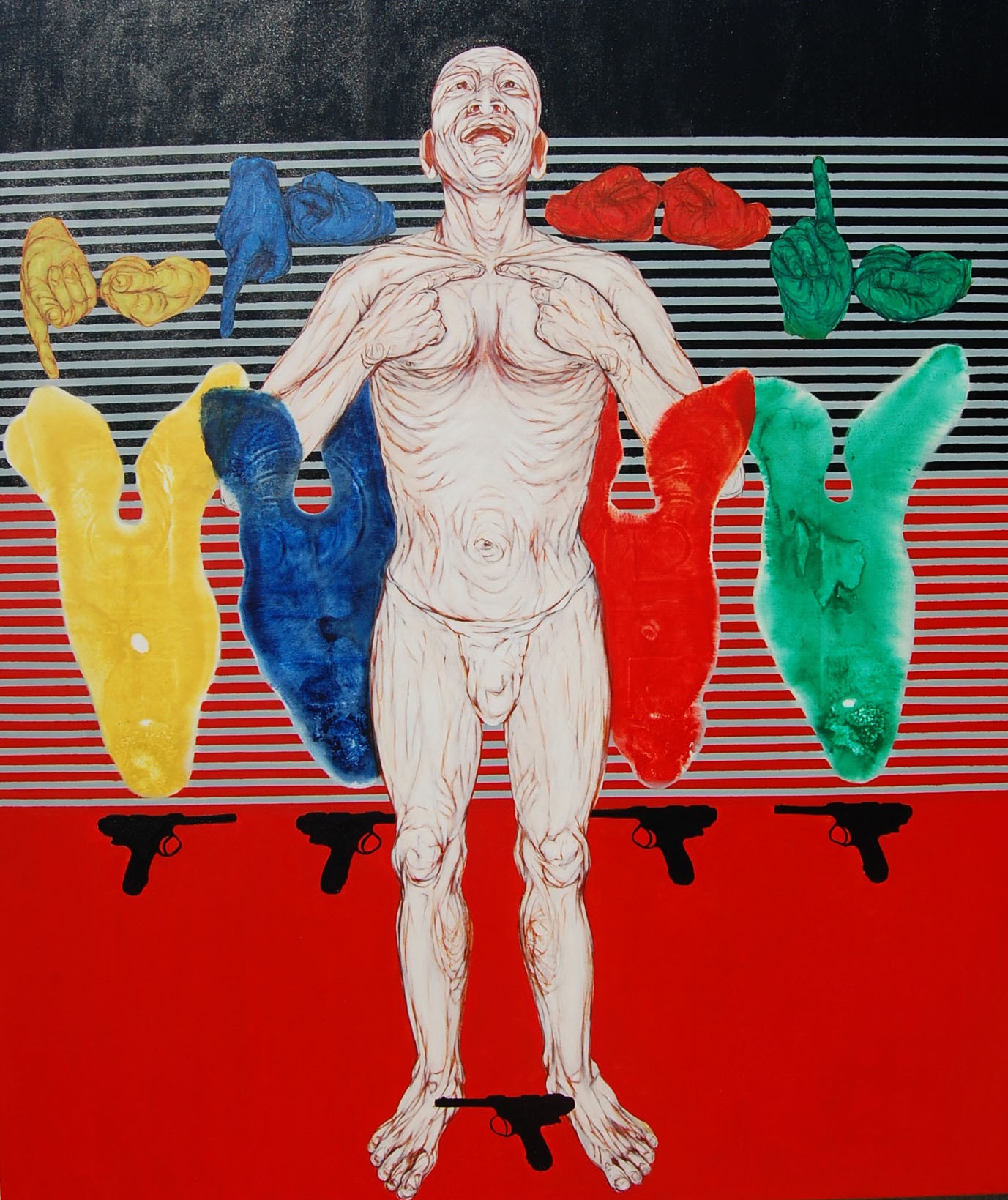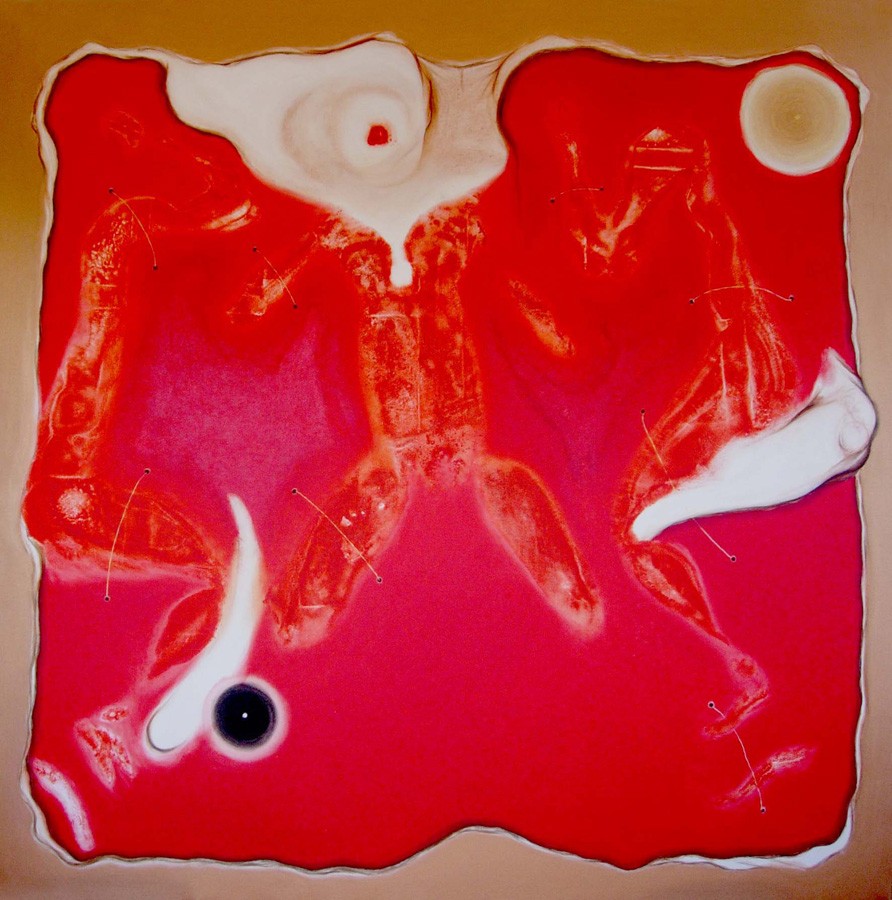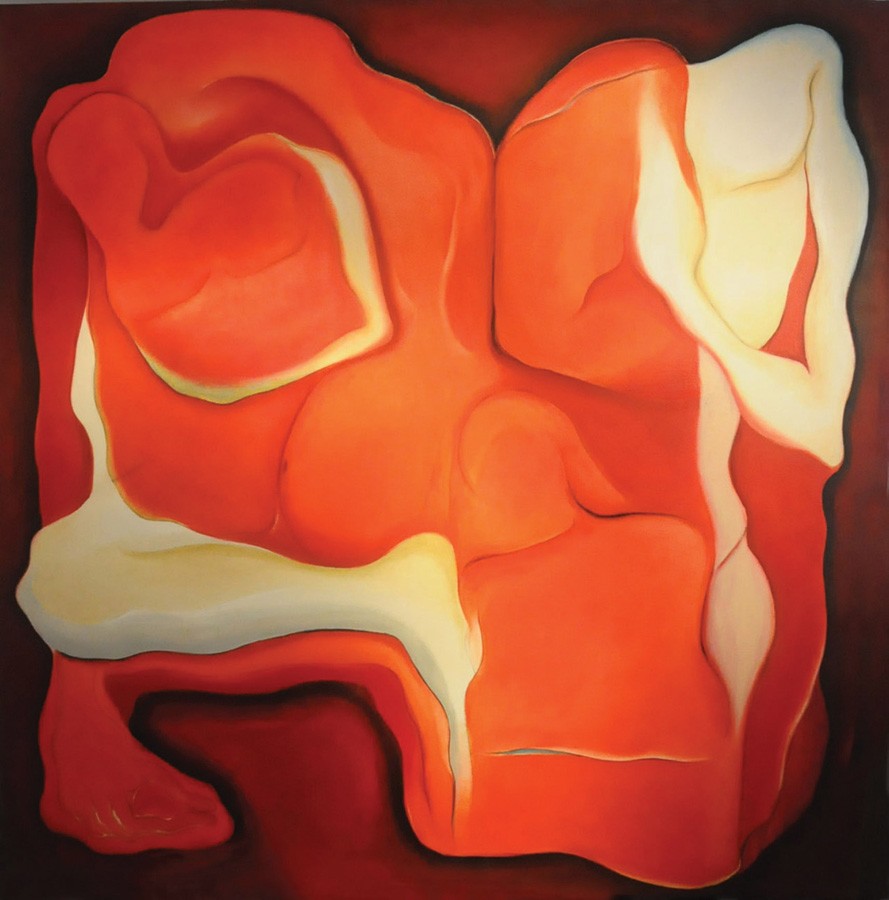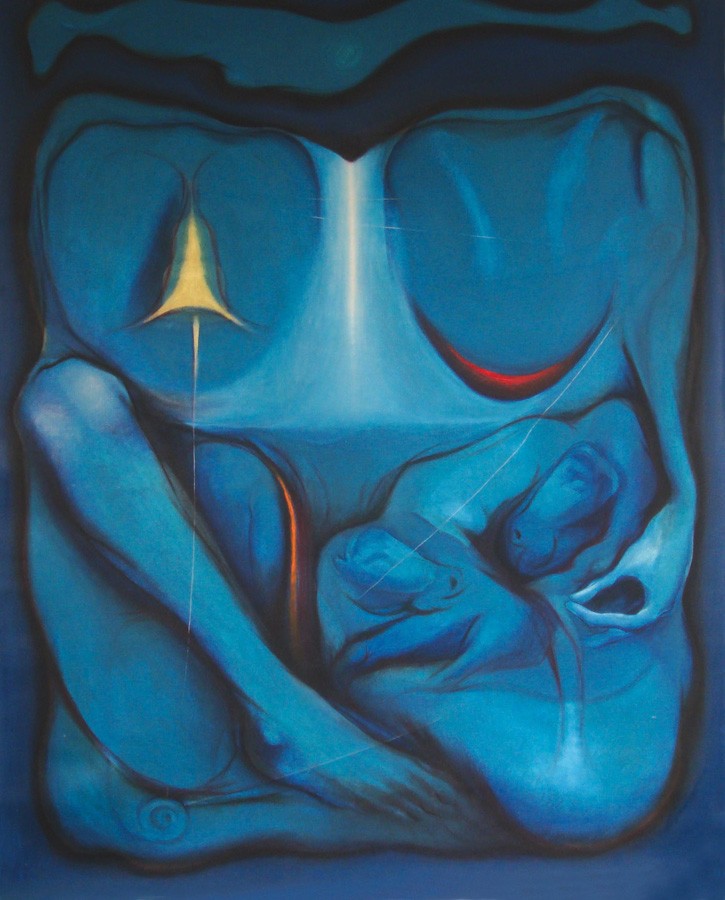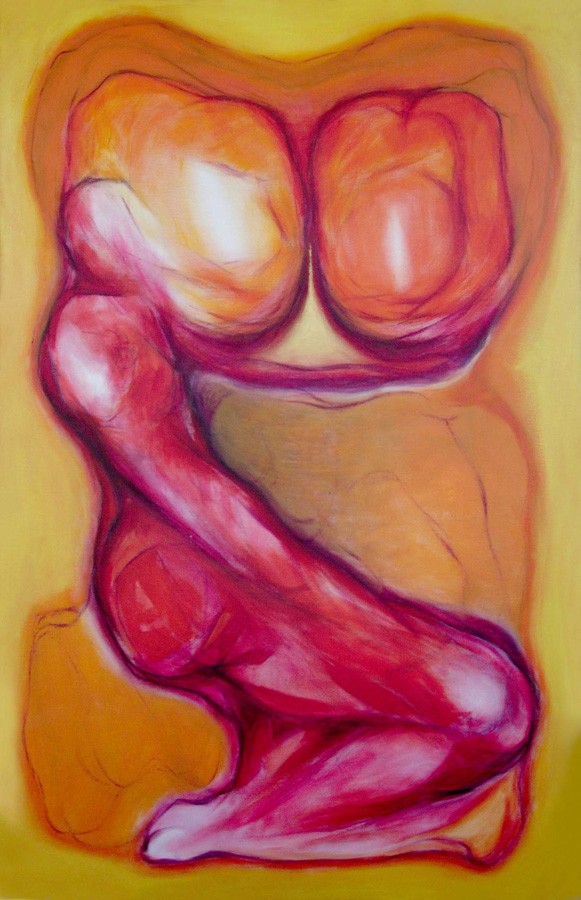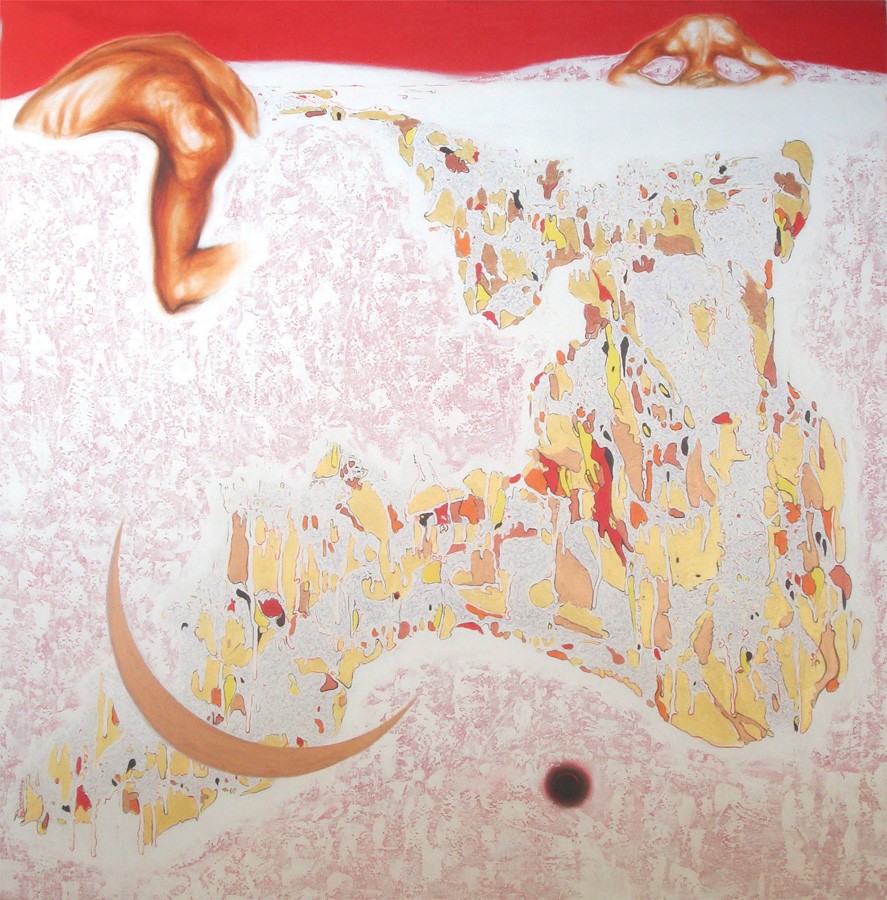Mukesh Shrestha

Mukesh Shrestha’s paintings are dominantly related to the Hindu and Buddhist religious shrines and spirituality. He captures various events from the Buddha’s life like the nativity, renunciation, meditation, enlightenment and preaching. He has also portrayed five transcendental Buddhas in their respective colours- Ratnasambhav in yellow, Akshobhya blue, Vaairochana white, Amitaabha red, and Amoghsiddhi green. Lotus, wheel and vajra are recurrent symbols in his works. The meditating Buddhas are seated on the lotus seat. Lotus is the symbol of prakriti, the female principle and the universe.
Mukesh Shrestha’s paintings are dominantly related to the Hindu and Buddhist religious shrines and spirituality. He captures various events from the Buddha’s life like the nativity, renunciation, meditation, enlightenment and preaching. He has also portrayed five transcendental Buddhas in their respective colours- Ratnasambhav in yellow, Akshobhya blue, Vaairochana white, Amitaabha red, and Amoghsiddhi green. Lotus, wheel and vajra are recurrent symbols in his works. The meditating Buddhas are seated on the lotus seat. Lotus is the symbol of prakriti, the female principle and the universe. The union of sadhaka with the prakriti leads to the enlightenment and the nirvana. Thus the lotus seat, meditation and nirvana are the interconnected and coherent concepts.
Likewise, vajra, the popular image in the Buddhist shrines, is also the symbol of the union of prakriti and purasa, the male and female principles respectively. The lotus in the middle is penetrated by the linga (phallus) thereby signifying the self and the cosmic being.
On the other hand, the wheel is the wheel of life, that is, life is changeable. Nothing is permanent. Thus, why to be attached to the transient things? The concept of the wheel encourages the people for renunciation and seeking the truth beyond.
Another formal quality of Mukesh’s paintings is the abstract decorative pattern. He nestles the inner realistic images with the outer splashes of the fluid. The fluidity and the intricate and spontaneous fibers and nets give the sense that the images are within cosmic womb.
In his works, sometimes, the form and structure itself, not the contents, carry meaning and significances. For instance, he juxtaposes dark and light, bright and dull colours, likewise, rough and smooth textures to signify the possibility of concentration and distraction, creation and destruction, and certainty and uncertainty as we experience in the life and the world.
Mukesh’s works are response to the contemporary situation like the people’s discontentment, hatred, violence, fear, suffering, pain and death. He works with the mission to generate peace, compassion, love and enlightenment out of the chaos and disorder.
Despite the fact that Mukesh captures the images of nature and critiques on the socio-political concerns of the time, most of his works revolve around spirituality, myths, tradition and ultimate peace in one way or other.
Mukesh Shrestha (1983)
Son of Shri Ram Krishna Shrestha & Smt. Tej Laxmi Shrestha
Academic Background:
M.F.A. (Painting) , Banaras Hindiu University BHU, India (2008)
B.F.A., Fine Art College (LalitKala Campus) Tribhuvan University, Nepal (2004)
I.F.A., Fine Art College (Lalit kala Campus) Tribhuvan University, Nepal (2001)
Awards:
Gold Medal-Master in Fine Art (MFA) Painting, Banaras Hindu University, Varanasi, India
Painting Collection:
India, Sri Lanka, Israel, Holland, CAAN, Japan, America, Thailand, Spain & Private Collection.
Solo Exhibition:
2006: “Mood of time” Nepal Art Council, Baber Mahal, Kathmandu
2007: “ Kashi-the inspiration” Banaras Hindu University, Varanasi, India
2009: “ Kashi-an impression”, Nepal Art Council, Baber Mahal, Kathmandu
2010: “Buddha –The Perennial”, Fusion Studio, Thamel, Kathmandu
Group:
2003: Organized by Blossom Art at Nepal Art Council
2005: Organized by CAAN at Singha Art Gallery, Patan
2005: 36th National Art & Craft Exhibition at NAFA, Kathmandu
2005: Bagmati River Festival by Nodan Club, Kathmandu
2005: Yuva Kala Kendra, Dharan
2006: The Peace Art Festival, Kathmandu
2006: Organized by Nepali Film Organization, BICC, Kathmandu
2006: Organized by Jennune School at Jennune School, Bhaktapur
2006: Peace Art Festival , Pokhara
2006: Bhaktapur Artist Group, Bhaktapur
2006: Gurukul, Old Baneshwor, Kathmandu
2006: Annual Art Exhibition , Banaras Hindu University, Varanasi, India
2007: “Rashtrya Kala Mela”, Allahabad University, Allahabad, India
2007: “Shilpa Utsav”, Ramchattpar, Varanasi , India
2007: ”All India Collage Painting Exhibition” Collage of Art, New Delhi, India
2007: “Annual Art Exhibition” Banaras Hindu University, Varanasi, India
2008: Art Exhibition Organized by Camlin Art Foundation, Kolkota, India
2008: Art Exhibition Organized by UNFPA (United Nation Population Fund-India) New Delhi, India
2008:”Amalgam” International Group Art Exhibition, Siddhartha Art Gallery, Kathmandu
2008: “Gender Based Violence” Maiti Nepal Art Council, Kathmandu
2009: “ Poetry Village” Lumle, Kaski
2009: “Creative Eyes” Tilganga Hospital, Kathmandu
2009: “Process to Move” An international Art Exhibition, Siddhartha Art Gallery, Kathmandu
2010: “A Passsage Through the Years” (1965-2010) An exhibition of art works by the teachers of Lalit Kala Campus and Guest Artists, Nepal Art Council, Kathmandu
2010: “Sad Bhav” Workshop & Exhibition organized by Nepal Academy of Fine Arts, Naxal, Kathmandu.
